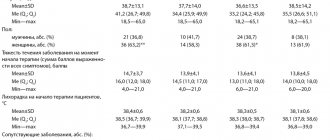Conjunctivitis is an inflammation of the thin mucous membrane covering the eyeball and the adjacent surfaces of the eyelids. This connective membrane, or conjunctiva, is normally transparent and colorless; it serves to moisten the cornea with a liquid mucous secretion, which is produced by the own glands of the conjunctiva in addition to the secretion of the main lacrimal glands. The conjunctiva receives nutrition from blood circulation in a network of small, almost invisible vessels, closely connected with the blood supply system of the eyelids. Inflammatory processes in this important structural element of the visual system manifest themselves as symptoms common to all conjunctivitis, due to the anatomical structure of the conjunctiva (redness of the eyes due to swelling and blood filling of the vascular network, characteristic turbidity, discomfort in the eye, increased lacrimation), and specific, due to cause and source of inflammation (presence/absence of purulent exudate, itching or pain, photophobia or swelling of the eyelids, etc.). Finally, some forms of conjunctivitis, for example, chlamydial in the early stages, can be practically asymptomatic for a long time.
Fig. 1 Preparations in the form of eye drops and ointments are the main method of treating conjunctivitis
The nature and pathogenic properties of the damaging factor, as well as the type of conjunctivitis (acute or chronic), determine the therapeutic approach. Thus, along with the elimination of general symptoms (anti-inflammatory, desensitizing, and, if indicated, moisturizing drugs) for conjunctivitis, etiopathogenetic measures should always be taken to eliminate the causes of inflammation. Therefore, the primary task of an ophthalmologist is usually to study the medical history, differentiate between various suspected types of conjunctivitis, and clarify diagnostics (for example, bacterial culture or serological testing to accurately identify the causative agent of the infectious-inflammatory process).
Thus, the clinical picture, the most likely dynamics of development, and the response therapeutic strategy depend on the etiological causes of conjunctivitis. In addition, the etiological criterion underlies the generally accepted typological classification of conjunctivitis. So, below are the most common types of conjunctivitis and the most effective means of treating it today. It should be emphasized that this information is provided for informational purposes only and can in no way be used as recommendations for self-medication.
Fig. 2 Antibacterial drops - a mandatory component of treatment
Infectious conjunctivitis
Statistically the leading variant of inflammation of the conjunctiva. Depending on the pathogen, it is divided into subgroups: viral, bacterial, fungal. Moreover, the incidence in children is distributed among these subgroups with approximately equal frequency, while in adults predominantly viral forms are found (over 80%). In the overall structure of morbidity, the proportion of fungal conjunctivitis (ophthalmomycosis) is increasing, which is explained, first of all, by the catastrophically irresponsible and uncontrolled use of antibiotics by the population (when the bacterial flora is suppressed, fungal cultures, including pathogenic ones, are activated).
Drugs for the treatment of viral conjunctivitis
With viral conjunctivitis (it can be caused by influenza viruses, herpes, etc.; in total there are about 40 species dangerous to humans), the main therapeutic goal is to stimulate and intensify the immune response. For this purpose the following are appointed:
- eye drops based on human interferon (Ophthalmoferon, Interferon, etc.);
- drugs that stimulate the production of endogenous, own interferon (Poludan, Tsitovir, Cycloferon);
- eye ointments (Bonafton, Acyclovir, Florenal, etc.);
- according to indications - vasoconstrictor and/or moisturizing drugs (“artificial tears”), similar to Vizin, Oksial, etc.
Drops and ointments for bacterial (purulent) form
For bacterial conjunctivitis, antibiotics are prescribed:
- drops (Albucid, Levomitin, Tsipromed, etc.);
- eye ointments (tetracycline, erythromycin, gentamicin, ofloxacin);
- tablet drugs (Doxycycline, Sumamed, Vilprafen, etc.; for chlamydia, Levofloxacin, Lomefloxacin).
Only a specialist can prescribe medications (and their dosage, frequency and duration of use) and evaluate the effectiveness of their use! By contacting our ophthalmology center, you can be sure of an individual approach and high results in the treatment of eye diseases in children and adults.
Treatment of fungal infections (mycoses)
For fungal conjunctivitis (ophthalmomycosis), treatment, as a rule, lasts much longer than for other infectious conjunctivitis, and includes specific antimycotic agents, and antifungal eye drops are practically not produced on an industrial scale in the world - they are prepared extemporaneously (as needed): Fluconazole , Amphotericin et al.
Some cases require additional intake of tablet forms of the antimycotic, as well as the simultaneous use of anti-inflammatory, antihistamine (antiallergic) and antibacterial drops and ointments.
Fig. 3 Eye drops are placed behind the eyelid at night and provide long-lasting effects
Tsipromed eye drops 0.3%, 5ml dropper bottle
Registration Certificate Holder
SENTISS PHARMA (India)
Dosage form
Medicine - Cipromed
Description
Eye drops 0.3%
in the form of a clear solution from colorless to pale yellow.
1 ml
ciprofloxacin (hydrochloride form) 3 mg
Excipients
: benzalkonium chloride, sodium edetate, lactic acid, sodium chloride, sodium hydroxide, water for injection.
5 ml - plastic dropper bottle (1) - cardboard packs. 5 ml - dark glass bottles (1) complete with a dropper - cardboard boxes.
Indications
Infectious and inflammatory diseases of the eye and its appendages caused by microorganisms sensitive to the drug:
- acute and subacute conjunctivitis;
- keratitis;
- anterior uveitis;
- blepharitis and other inflammatory diseases of the eyelids;
- dacryocystitis.
Prevention and treatment of infectious complications in injuries of the eye and its appendages and during operations on the eyeball.
Contraindications for use
- pregnancy;
- lactation (breastfeeding);
- children under 1 year of age;
- hypersensitivity to the components of the drug or to other fluoroquinolones.
pharmachologic effect
Antibacterial drug from the group of fluoroquinolones for topical use in ophthalmology. It has a wide spectrum of antibacterial action and has a bactericidal effect. The mechanism of action is associated with the ability to inhibit the enzyme DNA gyrase of bacteria, which leads to disruption of DNA replication and the synthesis of cellular proteins of bacteria. Ciprofloxacin acts both on microorganisms that are reproducing and those in the dormant stage.
Active against gram-negative microorganisms:
Escherichia coli, Salmonella spp., Shigella spp., Proteus spp.
(indole-positive and indole-negative strains), Morganella morganii, Citrobacter spp., Klebsiella spp., Enterobacter spp., Vibrio spp., Campylobacter spp., Hafnia spp., Providencia stuartii, Haemophilus influenzae, Pasteurella multocida, Pseudomonas spp. , Gardnerella spp., Legionella pneumophila, Neisseria spp., Moraxella catarrhalis, Acinetobacter spp., Brucella spp., Chlamydia spp. Gram-positive microorganisms are also sensitive
to ciprofloxacin Staphylococcus spp., Streptococcus pyogenes, Streptococcus agalactiae, Corynebacterium diphtheriae, Listeria monocitogenes.
The drug is low toxic.
Drug interactions
Pharmaceutical interactions
Ciprofloxacin solution is incompatible with drugs with a pH value of 3-4 that are physically or chemically unstable.
Dosage regimen
The drug is prescribed 1-2 drops into the conjunctival sac of the affected eye. The frequency of instillations depends on the severity of the inflammatory process.
For acute bacterial conjunctivitis, simple, scaly and ulcerative blepharitis
Tsipromed is prescribed 4-8 times a day depending on the severity of the inflammatory process. The course of treatment is from 5 to 14 days.
For keratitis
the drug is prescribed 1 drop at least 6 times a day. If there is a positive effect, the duration of therapy depends on the severity of the corneal lesion and is usually 2-4 weeks.
For corneal lesions caused by Pseudomonas aeruginosa,
Tsipromed is prescribed 1 drop at least 8-12 times a day. The duration of therapy depends on the course of the disease and is usually about 2-3 weeks.
For anterior uveitis
the drug is prescribed 1 drop 8-12 times/day.
For acute dacryocystitis and canaliculitis
Tsipromed is prescribed 1 drop 6-12 times a day, for
chronic cases
- 4-8 times a day.
To prevent secondary infection in case of injuries to the eye and its appendages,
Tsipromed is prescribed 1 drop 4-8 times a day for 1-2 weeks.
For the prevention of inflammatory diseases after surgical interventions with perforation of the eyeball
Tsipromed is prescribed 1 drop 4-6 times a day during the entire postoperative period (usually from 5 days to 1 month).
Overdose
In case of accidental ingestion of Tsipromed, specific symptoms
none. Possible: nausea, vomiting, diarrhea, headache, fainting, anxiety.
Treatment:
standard emergency measures, sufficient fluid intake, creating an acidic urine reaction to prevent crystalluria.
Side effect
From the side of the organ of vision:
immediately after instillation - a slight burning sensation for 1-2 minutes, itching, soreness, hyperemia of the mucous membrane of the eye; possible - allergic reactions, swelling of the eyelids, photophobia, lacrimation, sensation of a foreign body in the eye, unpleasant taste in the mouth immediately after instillation, decreased visual acuity, the appearance of a white crystalline precipitate in patients with a corneal ulcer, keratitis, keratopathy, the appearance of spots or infiltration of the cornea, development of superinfection.
special instructions
When wearing soft contact lenses, you should not use Tsipromed eye drops, because the preservative they contain can be deposited in soft contact lenses and have an adverse effect on eye tissue. Hard contact lenses should be removed before instillation of the drug and reinserted after 15 minutes.
When using other ophthalmic drugs, the interval between their administration should be at least 5 minutes.
Effect on the ability to drive vehicles and operate machinery.
Immediately after using the drug, vision clarity and slower psychomotor reactions may decrease, which may reduce the ability to engage in potentially hazardous activities that require increased attention (especially when consuming alcohol at the same time).
Storage conditions
The drug should be stored out of the reach of children, protected from light at a temperature not exceeding 25°C; do not freeze.
Best before date
Shelf life: 2 years. After opening the bottle, the shelf life is 1 month.
Use during pregnancy and breastfeeding
Restrictions during pregnancy - Contraindicated. Restrictions when breastfeeding - Contraindicated.
Tsipromed is contraindicated for use during pregnancy. If it is necessary to use the drug during lactation, breastfeeding should be stopped.
Use in children
Restrictions for children - With caution.
Contraindication: children under 1 year of age.
Terms of sale
The drug is available with a prescription.
Eye drops and ointments for allergic conjunctivitis
In case of allergic conjunctivitis, it is necessary, first of all, to eliminate or minimize contact with the allergen. To relieve symptoms, antihistamine H1-blockers are prescribed to suppress the allergic reaction:
- drops Allergodil, Opatanol, Cromohexal, Lecrolin, Ketotifen, etc.;
- decongestant and vasoconstrictor drops (Vizin, Visomitin, Oksial);
- eye ointments, incl. hormonal (Hydrocortisone, Dexamethasone);
Tablets of systemic antihistamines (for example, Tavegil, Suprastin, Loratadine and their analogues) may also be prescribed.
Medicines for chronic conjunctivitis
Chronic conjunctivitis, as a rule, means irritation and inflammation of the conjunctiva caused by prolonged exposure to harmful physical or chemical factors, or active foci of chronic infection in other organs.
Against the background of long-existing inflammation, the composition of the tear film and the amount of tears changes, and dry eye syndrome (DES) develops, which over time can develop into a severe form - corneal-conjunctival xerosis. In this case, epithelial defects occur (recurrent erosion), and a corneal ulcer may develop (a serious disease that threatens complete blindness).
Therefore, it is important not only to treat the cause of conjunctivitis, but also to use tear substitutes.[1]
Fig. 4 Tear substitutes (moisturizing drops) used for chronic conjunctivitis
“Cationorm” is a unique cationic emulsion that is suitable for people with glaucoma, blepharitis, allergic conjunctivitis and people using hormone replacement therapy (menopausal hormones, oral contraceptives). The drug restores all three layers of tears and prevents itching and redness of the eyes. Cationorm helps with severe pain and dryness in the eyes that appears in the morning, and quickly relieves discomfort. Drops can be applied directly to lenses. Drops should be used 1-2 drops into the eye sac 1-4 times a day.[2]
"Ocutiarz" - eye drops based on hyaluronic acid (a natural component of human tears) with an ultra-high molecular weight help to quickly relieve dryness and eliminate pain in the eyes that occurs occasionally after prolonged visual work (computer syndrome in office employees, motorists/motorcyclists, frequent fliers , travelers, students). In addition, the drops are suitable for people after ophthalmic surgery and people who have recently worn contact lenses. They do not contain preservatives and can be in direct contact with lenses. Directions for use: 1-4 times a day, 1 drop.[3]
“Oftagel” is an eye gel with carbomer in maximum concentration that moisturizes the ocular surface for a long time, eliminates pain and lacrimation of the eyes, and does not require frequent instillation; it can be used once a day as a means of additional eye hydration. Suitable for people who do not have the opportunity or desire to use drops during the day. Use 1 drop of the drug 1 – 4 times a day, depending on the severity of symptoms.[4]
In conclusion, the following points need to be emphasized:
Modern drugs used in ophthalmology, as a rule, have a wide spectrum and combined nature of action, so the same medicine can be prescribed for different types and forms of conjunctivitis. On the other hand, each variant of the inflammatory process requires a special approach - for example, a herpes viral infection is treated slightly differently than a “simple” adenoviral infection.
Further, there are very dangerous, but statistically rarer, or not typical for our latitudes forms of conjunctivitis - parasitic, epidemic Koch-Wicks, etiologically unclear, mixed (involving the cornea, eyelids, etc.) - therapy for which is beyond the scope of this article.
Finally, many of the drugs described above have absolute or relative contraindications, i.e. should be excluded or prescribed in sparing dosages (or under special medicinal cover) in the treatment of conjunctivitis in such categories of patients as children, pregnant or lactating women, people with weak immunity, patients with severe somatic pathology, etc. Considering the huge number of such clinical, therapeutic , pharmacological nuances, any attempts at self-medication, incl. "folk" means. Conjunctivitis of any genesis (origin) is not as harmless as it seems to many; in some cases, it poses a direct danger to vision, which is why timely seeking ophthalmological help is so important.
Material prepared by: Sagonenko Dmitry Alekseevich
Ophthalmologist, site consultant
List of sources used
- Kovalevskaya M.A., Maychuk D.Yu., Brzhesky V.V. Red eye syndrome. Practical guide for ophthalmologists. Moscow, 2010
- Brzhesky V.V., Algorithm for choosing tear replacement therapy in patients in outpatient practice, Clinical Ophthalmology 2021, No. 1
- Instructions for use of Ocutiarz® ophthalmic moisturizing solution
- Maychuk Yu. F., Yani E. V., Maychuk D. Yu. Artificial tear preparation Oftagel in the treatment of dry eye syndrome after epidemic keratoconjunctivitis / Breast Cancer “Clinical Ophthalmology”, No. 4 of November 12, 2001, p. 172.
- Back
- Forward
Add a comment
The use of the drug Tsipromed in the treatment of inflammatory diseases of the conjunctiva in children
diseases of conjunctiva in children EB Syakina Regional consulting and diagnostic child's center, Yaroslavl Article contains the clinical examples of Cipromed prescription in children with conjunctivitis of various etiologies. Infectious diseases of the conjunctiva are one of the pressing problems of practicing pediatric ophthalmologists. At present, there is an obvious tendency to increase the resistance of pathogenic microflora. A change in the ratio of gram-negative and gram-positive pathogens towards gram-negative, more aggressive strains forces the doctor to look for new treatment regimens. Sensitization of the child's body, which causes frequent allergic reactions to well-known drugs used in widespread practice, forces us to expand the range of antibacterial therapy, limit the duration and increase the effectiveness of treatment. Along with traditional drugs used in pediatric practice (chlorevomycetin, tetracycline, etc.), the antibacterial drug Tsipromed, produced by Promed Exports, began to be used on the basis of the Regional Diagnostic Center for Children from June 2006 (after the issue of the order of the Federal Service for Supervision in the Sphere of Health from 05/05/2006 on permission to use this drug in pediatric practice). Tsipromed (ciprofloxacin in the form of eye drops 0.3% solution) belongs to the group of fluoroquinolones and has a bactericidal effect on a wide range of gram-positive and gram-negative microorganisms. The drug was used for the treatment of bacterial conjunctivitis in children of various age groups, including children in the first year of life (with sensitivity determination). The control group included 34 children. Of these, children of the first year of life - 2, from one year to 3 years - 17, from 3 to 7 years - 8, from 8 to 15 years - 7 patients. According to parents, the drug was easily tolerated and did not cause a pronounced negative reaction in children. An allergic reaction occurred in one case (Kolysheva A., 9 years old. Diagnosis: Toxic-allergic conjunctivitis of unknown etiology in the right eye. Local hormonal therapy was used together with antibacterial therapy). The instillation scheme depended on the severity of the disease. On the first day - 1 drop 5 instillations, on the second and subsequent days (up to 7-10 days) - 3 instillations into each conjunctival fornix. The treatment regimen included antihistamines (Tavegil, Fenkarol, Zyrtec), immunomodulatory drugs that increase local nonspecific immunity (ophthalmoferon) and drugs that improve the general resistance of the body (multivitamins). Tsipromed was used for sanitation of the conjunctival cavity in the treatment of complicated viral conjunctivitis and keratoconjunctivitis; in the postoperative period after scleroplasty; in cases of stenosis or insufficiency of the lacrimal ducts, in case of infection of the lacrimal fluid in the lacrimal sac, when probing is difficult (for one reason or another). Examples from practice. Child Goryunov A. 7 months. Student at orphanage No. 2. Diagnosis: Bacterial conjunctivitis of both eyes. Dacryocystitis. Streptoderma. Down syndrome. Upon initial treatment with complaints of redness and suppuration of the eyes, upon examination, a bright injection of the conjunctiva of the eyelids and transitional fold, chemosis of the conjunctiva, purulent discharge with the formation of purulent films in the conjunctival fornix were noted. A smear from the conjunctiva isolated Streptococcus pyogenes, which is not sensitive to penicillin and chloramphenicol. After instillation of Tsipromed, already on the second day, an improvement in the clinical picture was noted: a decrease in edema, hyperemia, and the absence of discharge from the conjunctival cavity. After local inflammation was eliminated, the child was sent to the eye department for probing of the lacrimal ducts. Child Mamoyan G., 4 years old. Diagnosis: acute conjunctivitis of both eyes, congenital operated glaucoma of both eyes. He was examined by an ophthalmologist before being admitted to the eye department for examination under anesthesia. Treatment prescribed: Tsipromed 1 drop 3 times a day, collargol 2% 1 drop 2 times a day, ophthalmoferon hl. drops 1 drop. 4 times a day. A week later, when examined, the eyes are calm. The child was hospitalized for a routine examination for glaucoma. Pavlova A. was examined at a diagnostic center by a pediatrician for 15 years. Diagnosis: acute conjunctivitis of both eyes. During treatment with Tsipromed, without the addition of other drugs, clinical improvement was noted on the 3rd day, treatment was extended to 7 days. Thus, an analysis of the use of Tsipromed in the treatment of inflammatory diseases of the conjunctiva in children confirms the effectiveness of this drug and the safety of its use in the practice of a pediatric ophthalmologist.
![Table 1. Comparison of the results of treatment with Tribestan for men with oligoasthenozoospermia [7] with mod.](https://ms-pi.ru/wp-content/uploads/tablica-1-sravnenie-rezultatov-lecheniya-tribestanom-muzhchin-s-oligoastenozoospermiej-7-330x140.jpg)





